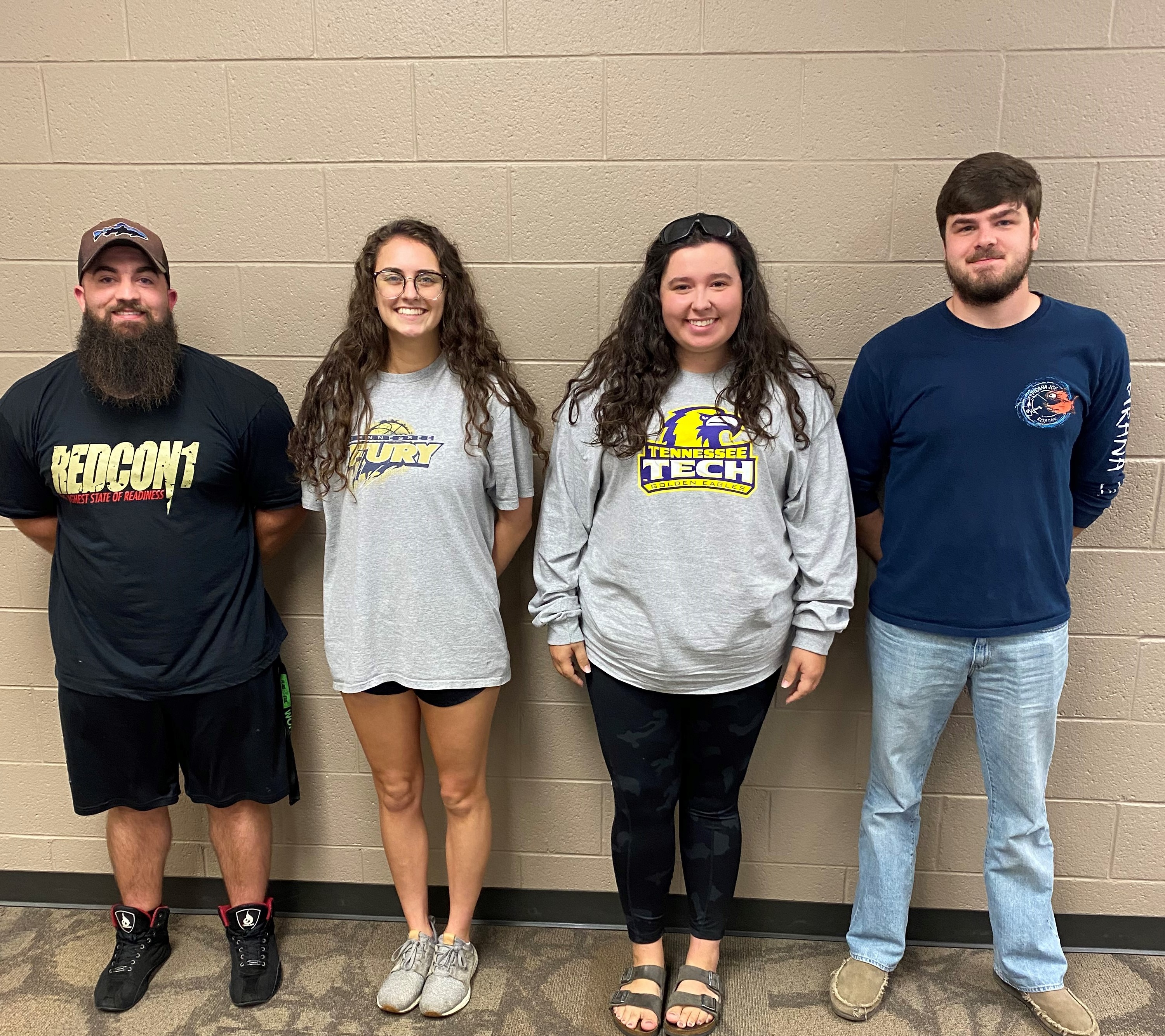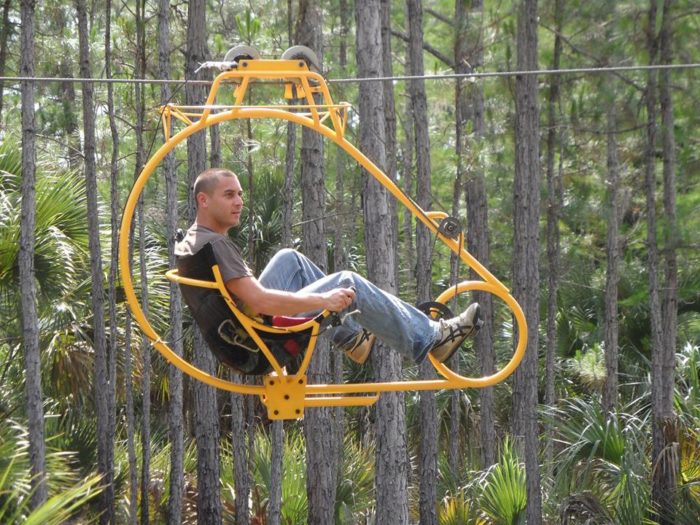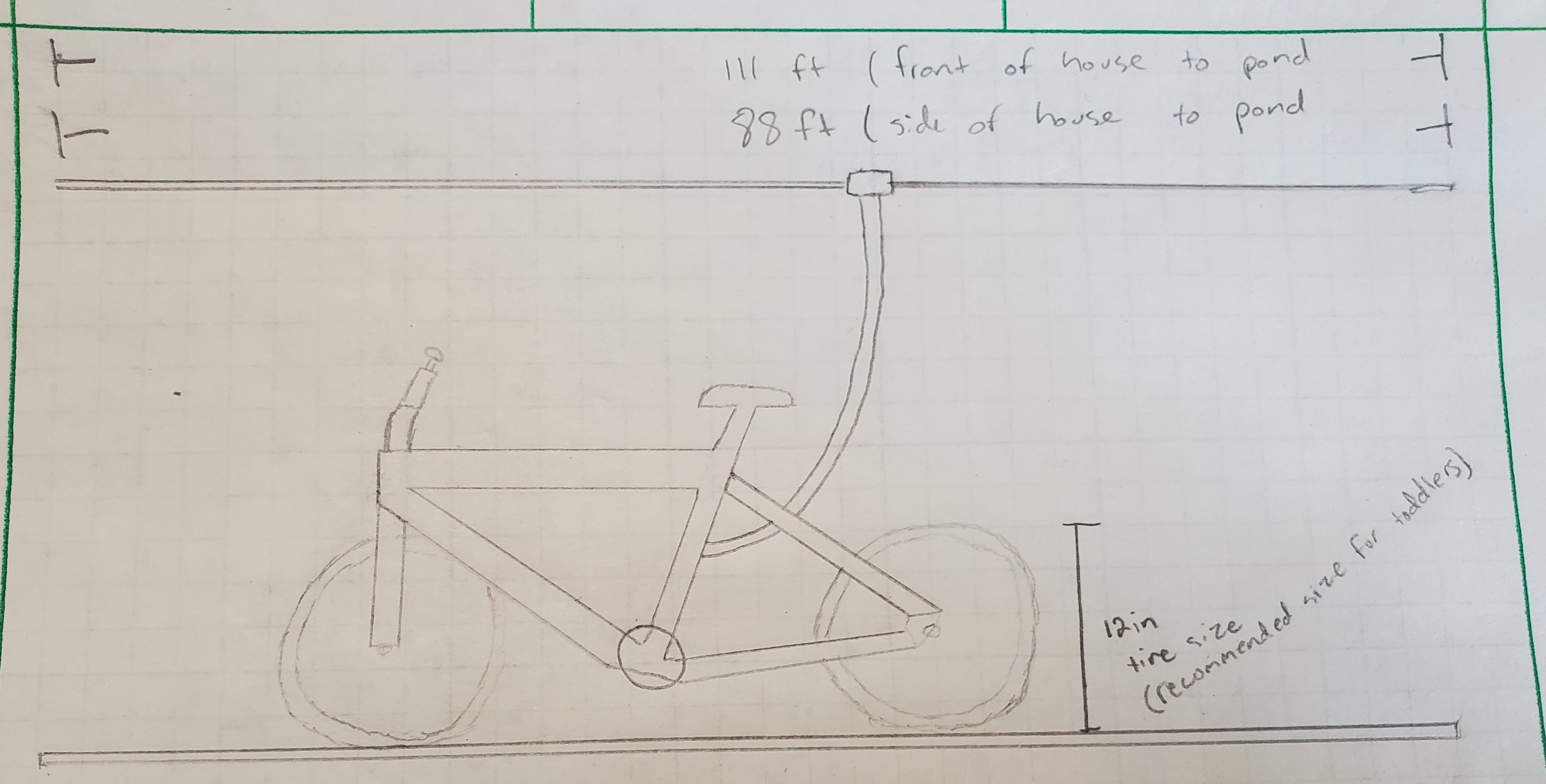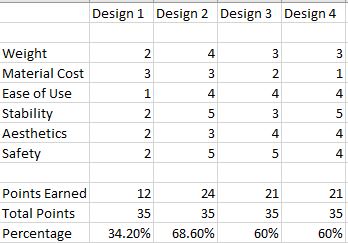Zipline
Abstract
The Tennessee Tech team is going to design and construct a zipline that will give our client's child a way to practice therapy at the comfort of their own home. The client specifically asked for a zipline to allow easy travel from the home to an outer location on uneven ground. The zipline will be designed to strengthen the muscles in the arm and legs of the child by being petaled operated by the hands and feet. Along with the petals, it will be attached to a chain with a gearing mechanism to allow the petal system to be adjustable as the child grows and becomes stronger. The seat will include a safety harness to insure the support and prevent falling out of the seat. The construction of the zipline will include a platform at the top of zipline with steps to allow easy loading and unloading along with the zipline mounting poll. The construction at the end will have another mounting poll with a sand pit at the bottom for the child to unload and load independently.
Team members
- Anthony Bryant
- Rachel DeBaar
- Haleigh Chappell
- Jared Jones
-Additional Assistance
- David Mutchmore
- Dr. Stephen Canfield
Problem Statement/overview of the need
Our client has a two and a half year old foster child that is in need of a therapeutic device that allows for ease of travel to a specific location at the Guardian's home (unstable ground). She is needing exercise that will help with hypertrophy and strength of her entire body. Needs to be adjustable to create a longer amount of time that it can be used as she grows older.
Design Specifications
--List of design specifications. Some of these must be quantitative and measurable. You should be able to use these to compare design options.
- Client specifically requested a modified zipline.
- Also requested platform with steps for ease of entrance and exit from the zipline.
- Must be able to support the weight of the child for years to come. (Starting at 25 lbs)
- Must be able to adjust the seat as the child grows through the years. (Starting at 2'9")
- Must be stable to ensure the child can not fall out of the device.
- Must be hand and leg operated.
- Varying tensions over time as the child grows older and stronger.
- Can not have any sharp edges or tripping hazards due to the family having many children that will be around the device.
- Must be able to withstand the elements.
Background research
We plan to base our design off of the mechanism shown below.
This Mechanism is in the EcoSafaris Adventure attraction in Orlando, FLorida. It was the first of its kind to be used in the United States. The design was developed by a company known as Eco-Adventure Technologies (E.A.T.). The mechanism itself is know as the Cypress Canopy Cycle and it used to be for people to be able to view nature up-close without leaving any kind of carbon foot print. Our motivation of this design is not so much the eco-friendly side of it, all though it is a nice plus. We hope to use this design for the ability of therapy and easier mobility for the child, Adeline.

The image above shows a close up view of the chain system that they use for this design. We plan to also base our design off of this as well.
Conceptual Design
Design Concept 1
This design is known as the Zip-Bike. Our first design is intended to function very similar to a bicycle. The bicycle would be attached to the cables and would move along the cables just as a bike would move across the ground. It has the idea that Adeline would not be directly touching the ground when trying to more around the front yard, but would also incorporate the idea of therapy with pedaling.
Design Concept 2
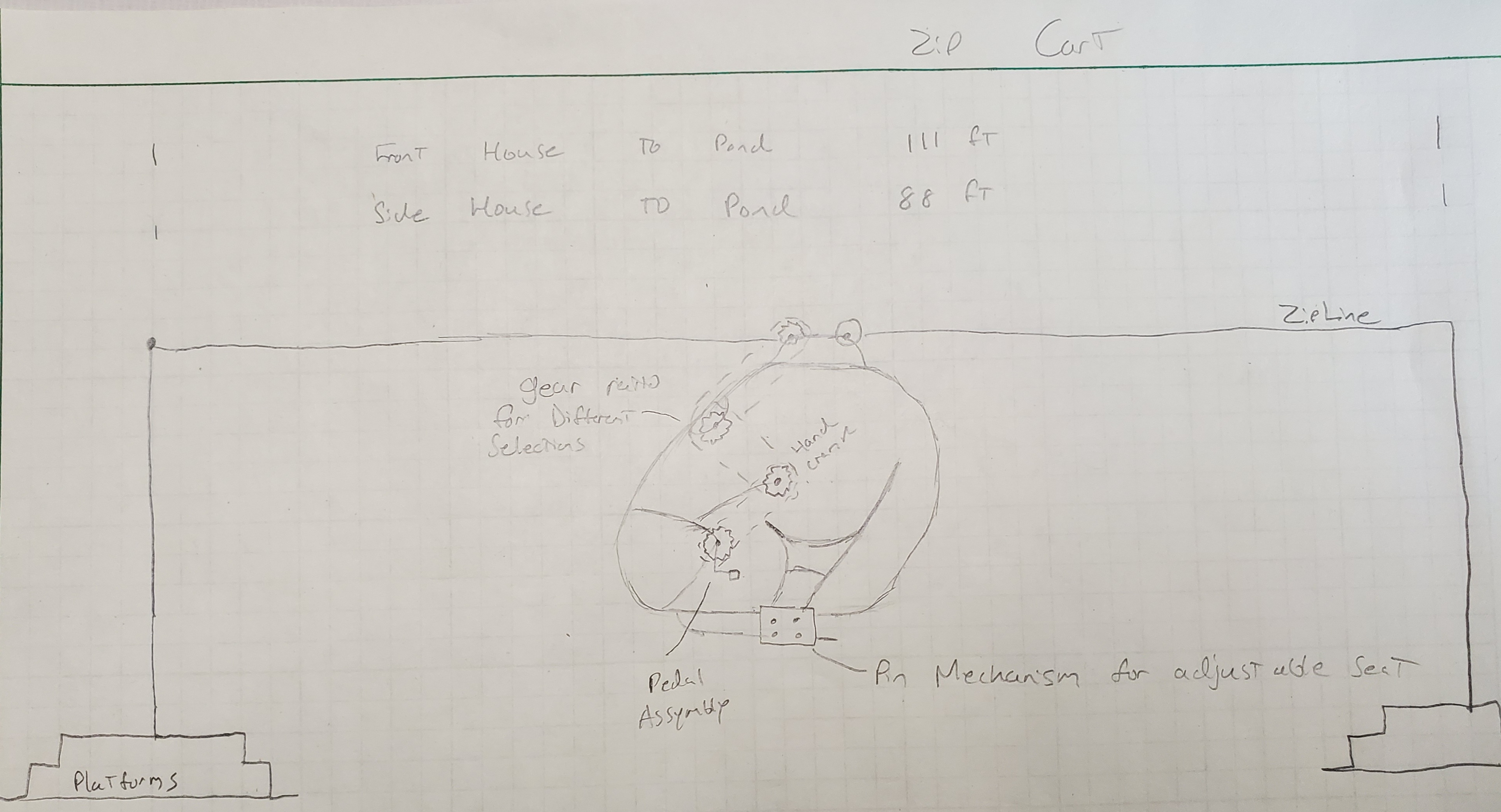 This design is known as the Zip-Cart. Our second design is similar to the first in that it incorporated the therapy within pedaling, but seems more practical. This device would hang from a single cable and worth very similar to an actual zipline in the sense that she will be suspended from a cable. We find this design better than an actual zipline because this way she can control her own speed and actually move back up the hill when she is at the bottom
This design is known as the Zip-Cart. Our second design is similar to the first in that it incorporated the therapy within pedaling, but seems more practical. This device would hang from a single cable and worth very similar to an actual zipline in the sense that she will be suspended from a cable. We find this design better than an actual zipline because this way she can control her own speed and actually move back up the hill when she is at the bottom
Design Concept 3
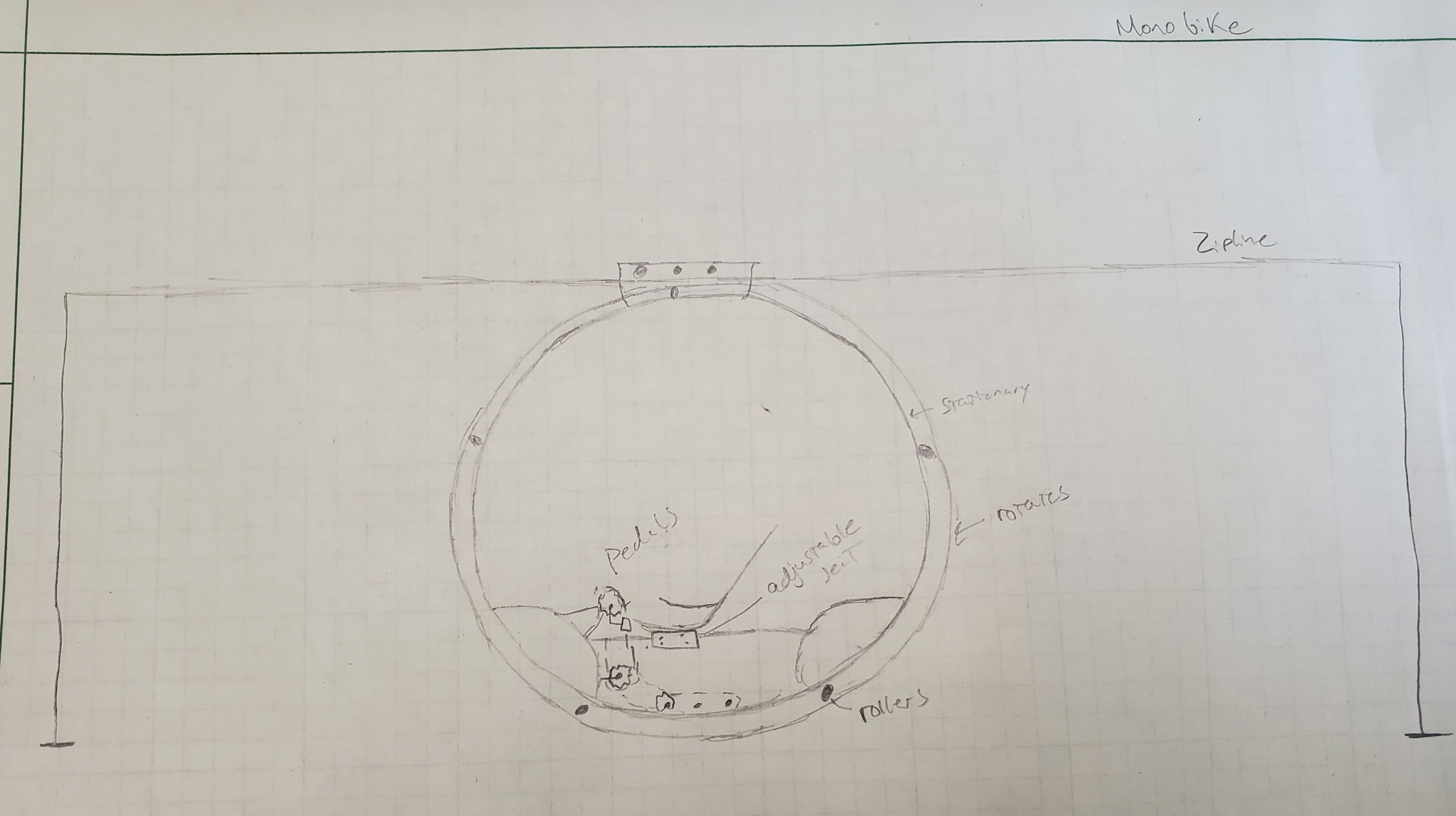 This design is known as the mono-bike. Our third design is rather similar to our second design. This design is shaped slightly different and would have a different pedal/chain system, but functions as a zipline much like the second design.
This design is known as the mono-bike. Our third design is rather similar to our second design. This design is shaped slightly different and would have a different pedal/chain system, but functions as a zipline much like the second design.
Design Concept 4
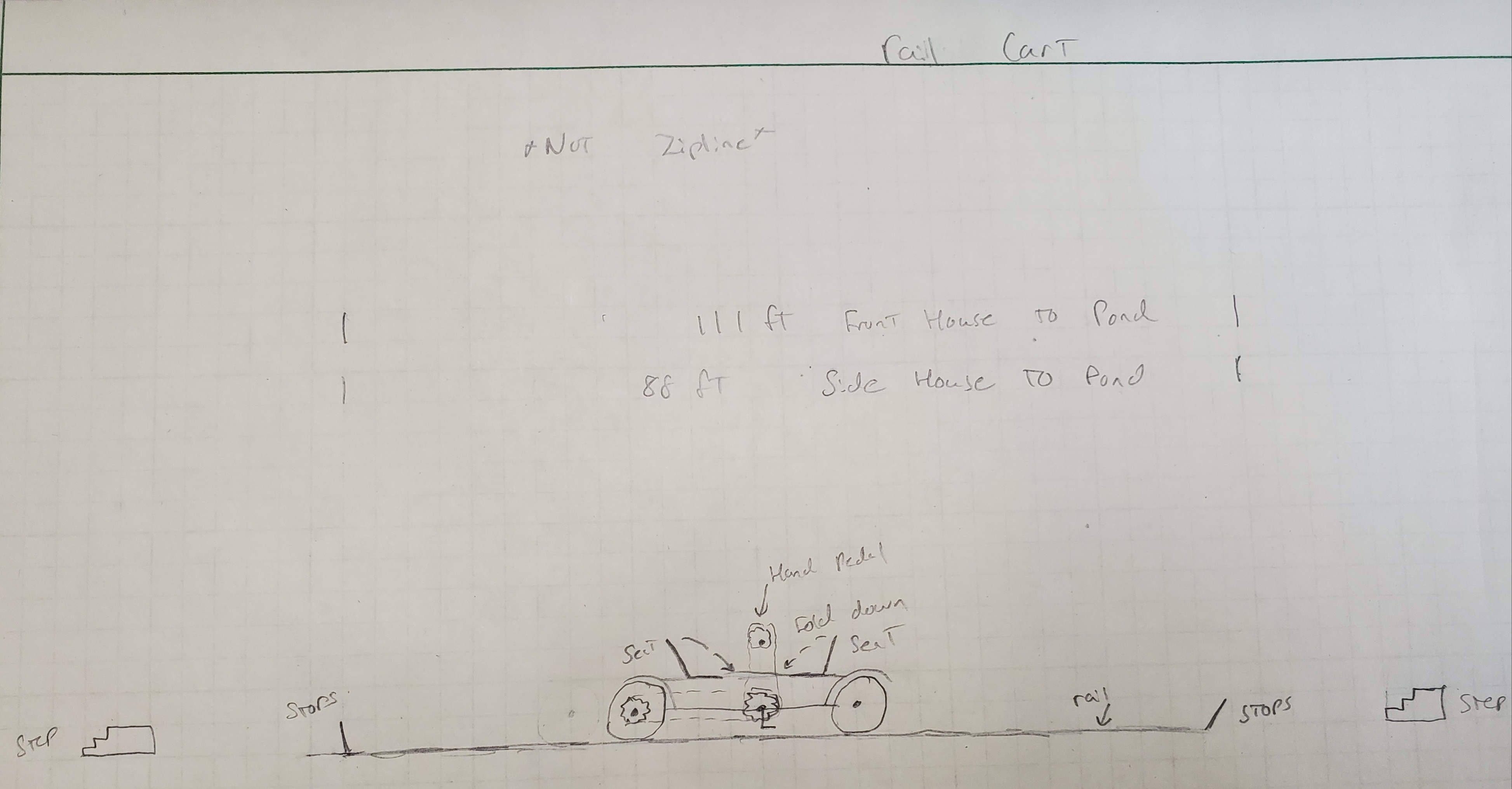 This design is known as the Track Design. This design does not really involve a zipline idea much at all but would still solve the problem at hand. Adeline would sit on top of a 4-wheeler type mechanism and would pedal this mechanism like you would pedal a bike. It would move a long a type of track that we place on top of the ground in order to solve the problem of the uneven ground. She would also get the therapy of pedaling her feet. This design is much different than the client is asking for but is potentially solving the problem at hand in a much more efficient way!
This design is known as the Track Design. This design does not really involve a zipline idea much at all but would still solve the problem at hand. Adeline would sit on top of a 4-wheeler type mechanism and would pedal this mechanism like you would pedal a bike. It would move a long a type of track that we place on top of the ground in order to solve the problem of the uneven ground. She would also get the therapy of pedaling her feet. This design is much different than the client is asking for but is potentially solving the problem at hand in a much more efficient way!
Evaluate concepts/select candidate
Based off of our Design Matrix, we have decided to proceed with design 2, the Zip-Cart.
Detailed Design
This section will describe a detailed design process
Description of selected design
Detailed description of selected design
Analysis
Describe three types of analysis to be performed on the design
Engineering analysis 1
Engineering analysis 2
Engineering analysis 3
CAD Drawings
Insert drawings of all parts and the assembly
Bill of Materials
qty, item, description, source, part number, price
Assembly Instructions
Fabrication Process
Insert pictures of fabrication process
Testing and implementation
Describe testing, delivery, how used/received by the family
Photos of Completed design
Insert pictures of the final product
Instructions for safe use
Provide a clear summary of safe use for the family. Do not use the device unless supervised by an adult that has been fully understood the safe use of this product.
